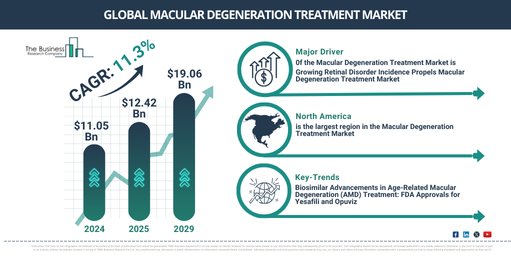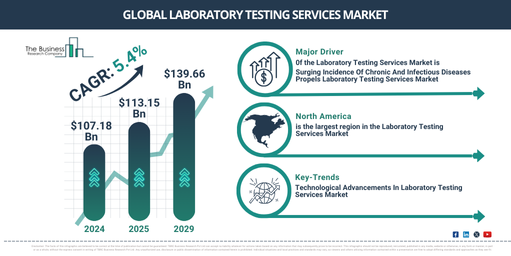What Is The Forecast Growth Rate For The Virtual Human Anatomy Software Market?
The Business Research Company’s market reports offer an in-depth analysis on the market’s growth potential, major drivers, key trends and more.
The virtual human anatomy market has seen remarkable growth recently, with its size increasing from $0.28 billion in 2023 to $0.36 billion in 2024, reflecting a compound annual growth rate (CAGR) of 27.3%. This blog explores the factors driving this growth and the trends shaping the future of this dynamic market.
Historic Growth Factors
Demand for Medical Education
- Medical schools and institutions increasingly adopt virtual human anatomy software to enhance teaching.
- Virtual tools offer a comprehensive, interactive learning experience.
Rise of E-Learning Platforms
- E-learning platforms’ expansion has facilitated the widespread adoption of virtual anatomy tools.
- Flexibility and accessibility of online education make it a preferred choice for many.
Patient-Specific Solutions
- Virtual anatomy software allows for personalized patient education and pre-surgical planning.
- Tailored solutions improve patient outcomes and understanding of medical procedures.
Research and Development
- Ongoing R&D investments drive technological advancements in virtual anatomy software.
- Innovative features and improved accuracy keep the market evolving.
Read More On The Virtual Human Anatomy Software Market Report 2024 – https://www.thebusinessresearchcompany.com/report/virtual-human-anatomy-software-global-market-report
Projected Growth Drivers
Remote Learning Solutions
- The pandemic accelerated the shift towards remote learning, boosting demand for virtual anatomy tools.
- Increased reliance on digital education methods will continue to propel market growth.
Online Medical Education Programs
- Expansion of online programs enhances the reach of medical education globally.
- Virtual anatomy tools are integral to these programs, offering immersive learning experiences.
Healthcare Simulation Training
- Growing emphasis on simulation-based training in healthcare to improve skills and patient safety.
- Virtual anatomy software provides realistic, risk-free training environments.
Personalized Learning Experiences
- Demand for customized learning paths in medical education is on the rise.
- Virtual anatomy tools enable personalized and self-paced learning.
Telemedicine and Telehealth Services
- Expansion of telemedicine requires advanced educational tools for remote consultations and diagnostics.
- Virtual anatomy software supports telehealth by providing detailed anatomical references.
Emerging Trends
Advanced Biometric Integration
- Integration of biometric data enhances the realism and interactivity of virtual anatomy tools.
- Biometric feedback can be used to tailor educational content to individual needs.
Expanded Use of Artificial Intelligence (AI)
- AI algorithms improve the accuracy and functionality of virtual anatomy software.
- AI-driven analytics provide deeper insights into user interactions and learning outcomes.
Telemedicine Integration
- Virtual anatomy tools are increasingly integrated into telemedicine platforms.
- This integration supports remote diagnostics and consultations with detailed anatomical visuals.
Blockchain for Medical Education Credentials
- Blockchain technology ensures the security and verifiability of medical education credentials.
- Virtual anatomy software providers leverage blockchain to certify skills and knowledge.
Augmented Learning Analytics
- Advanced analytics track user progress and performance in real-time.
- Educators use these insights to enhance teaching strategies and improve student outcomes.
Symbiotic Relationship with Digital Learning Tools
Enhancing Online Education
- Virtual anatomy software enriches online education by providing interactive and immersive experiences.
- It supports diverse learning styles and makes complex anatomical concepts more accessible.
Surge in Online Enrollments
- The number of students enrolled in online education surged from 71 million in 2020 to 92 million in 2021.
- Increased enrollments drive demand for high-quality digital learning tools, including virtual anatomy software.
Key Players in the Market
Leading Companies
- Notable companies include VirtaMed AG, Wolters Kluwer Health, Inc., Anatomage Inc., and Visible Body.
- These companies are at the forefront of innovation, developing cutting-edge virtual anatomy solutions.
Integration of Interactive Anatomy Learning in the Metaverse
Anatomage VR
- Anatomage VR offers a 3D simulation of human bodies for comprehensive anatomy learning.
- It enhances engagement with detailed visualizations and interactive features.
Major Acquisitions
Surgical Science and Simbionix
- In July 2021, Surgical Science acquired Simbionix to strengthen its position in medical simulation.
- This acquisition aims to advance robotic surgery simulations and improve training methodologies.
Market Segmentation
By Type
- 3D Anatomy Software
- VR Anatomy Software
By Technology
- Cloud-Based
- On-Premise
By Application
- Educational Institutions
- Hospitals and Clinics
- Other Applications
Regional Insights
- North America was the largest region in the virtual human anatomy market in 2023, leading the adoption of advanced educational technologies.
The virtual human anatomy market is poised for significant growth, driven by technological advancements and increasing demand for innovative educational tools. As the market evolves, it will continue to transform medical education and training, offering new opportunities and improved learning experiences.
Request for A Sample Of The Global Virtual Human Anatomy Software Market Report:
https://www.thebusinessresearchcompany.com/sample_request?id=15021&type=smp



